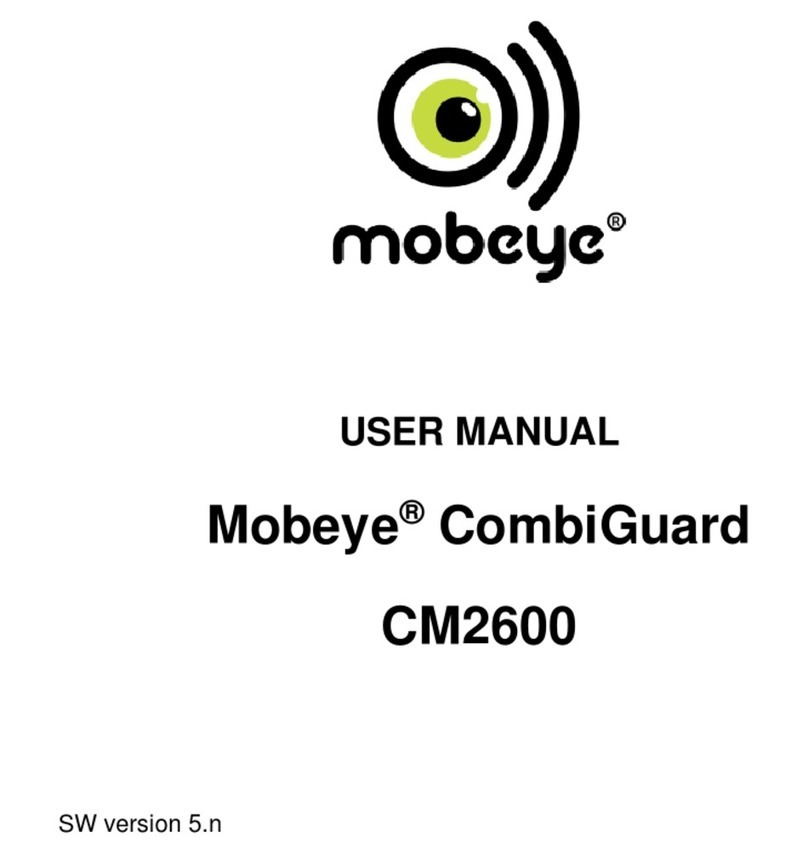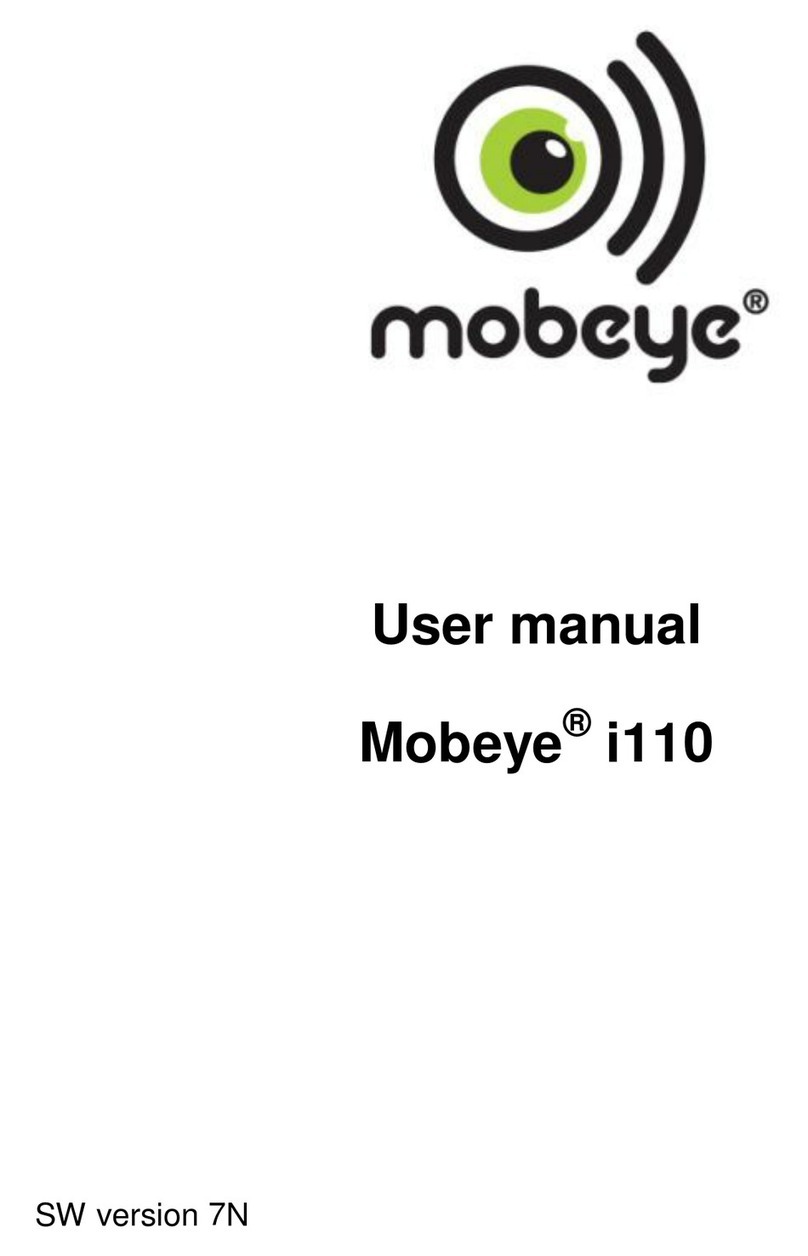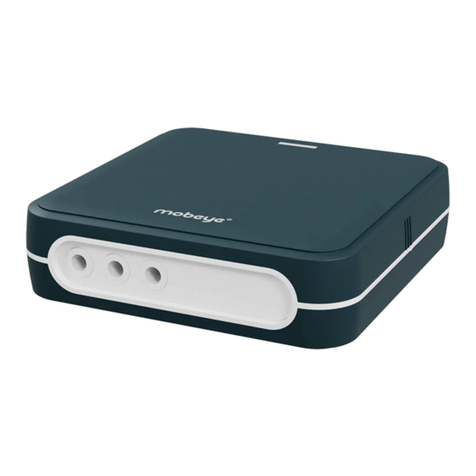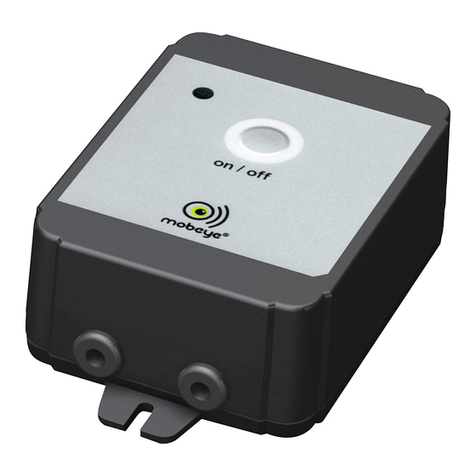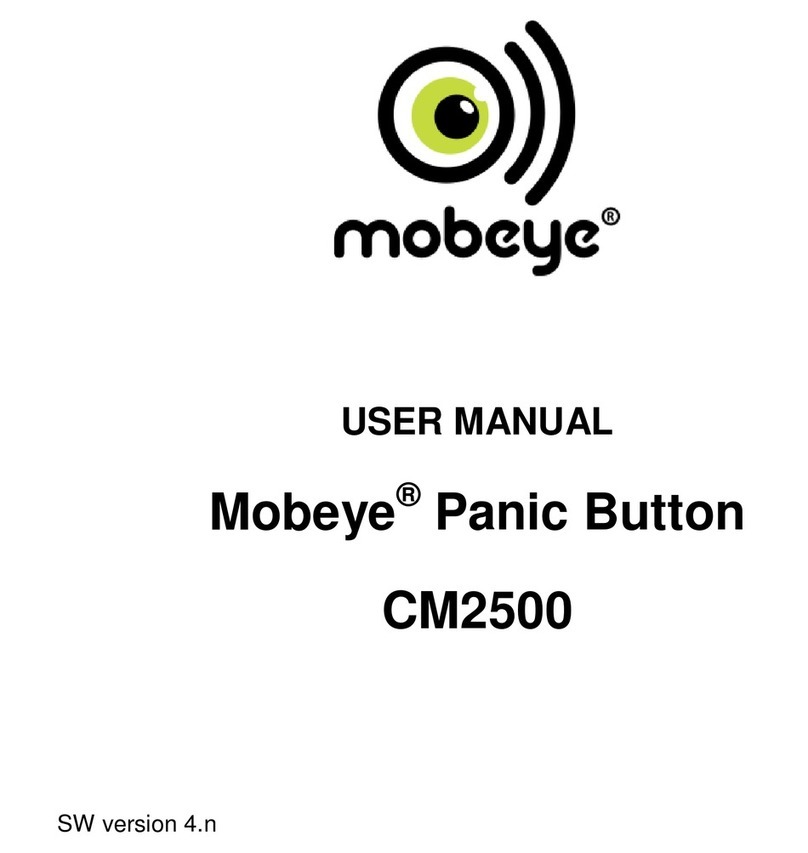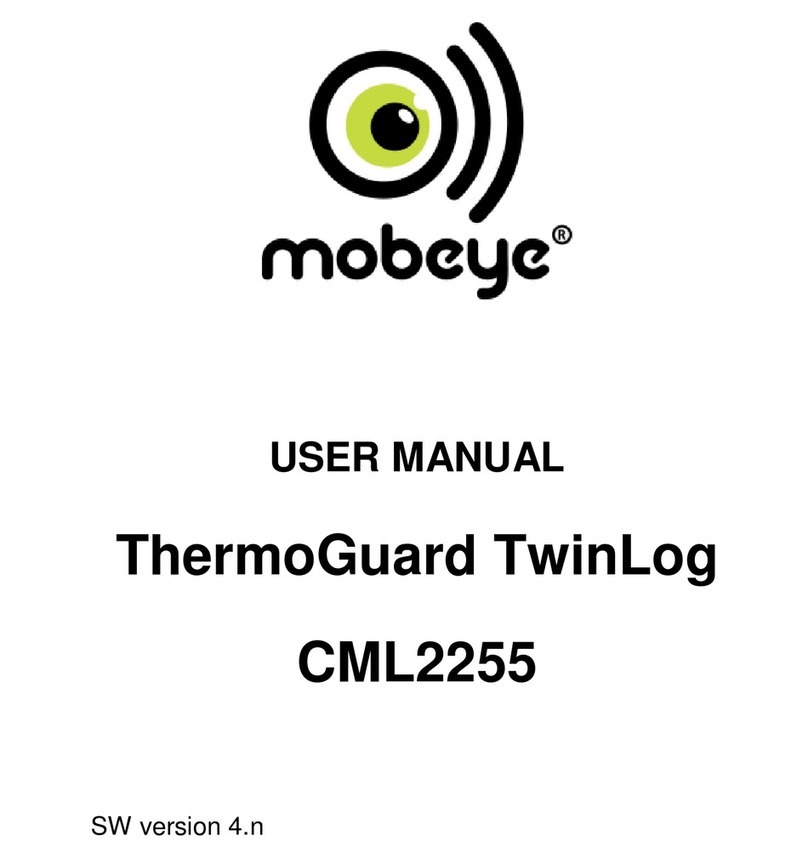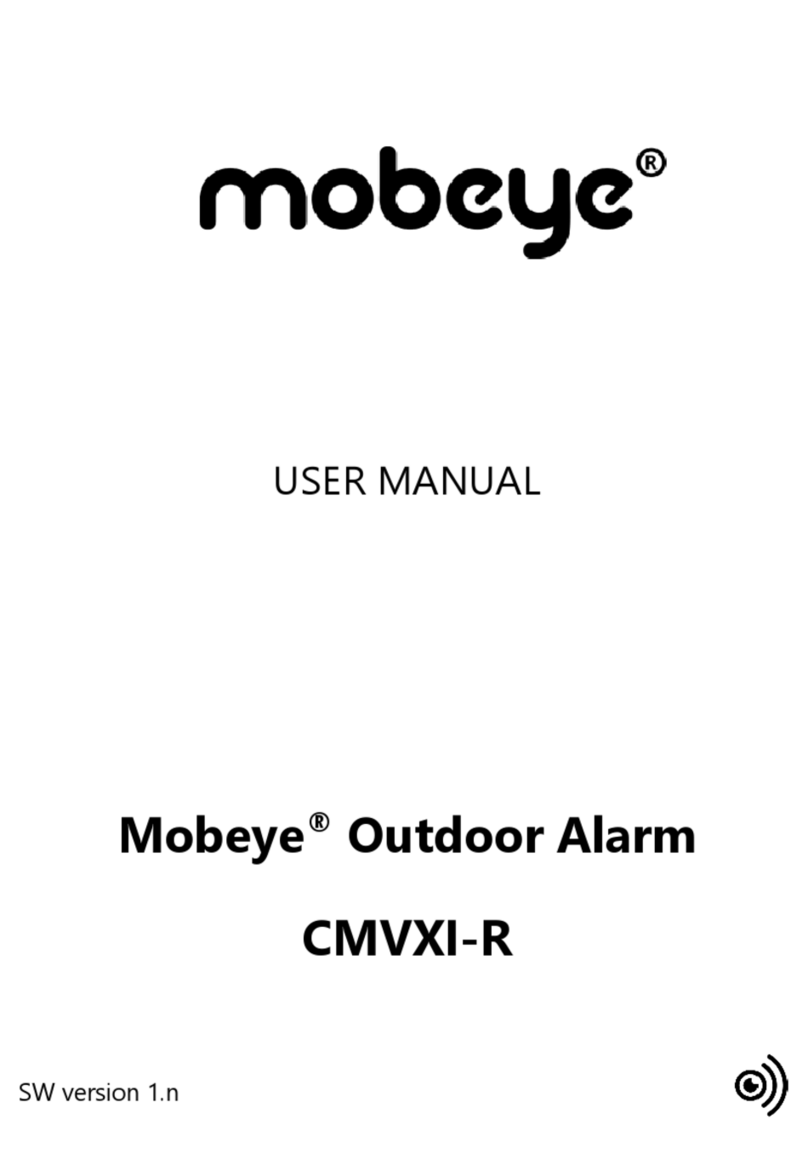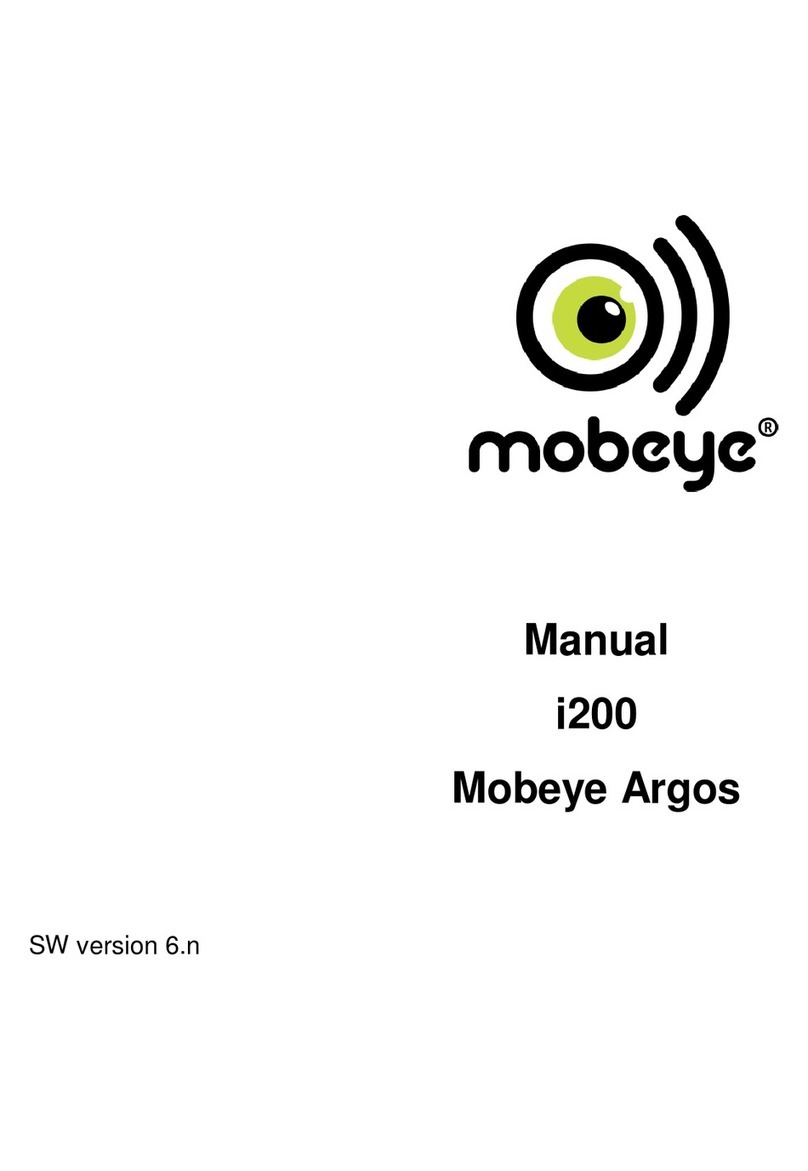4
2.3 CONNECT AN EXTERNAL POWER SUPPLY
Connect the external power adapter (or any
other regulated 12VDC power supply) to the
power input of the connector (press on the
green pins to connect the wires):
- V+ (black lead with white stripe) to “+”
- Ground (black lead) to “-“
As soon as the batteries are placed and the power source is connected, the Mobeye
PowerGuard switches to the program mode. First the GSM module establishes
network connection. During this time the LED flashes green and red. Within 10-30
seconds the connection is established and the status LED starts flashing 1 sec. on/1
sec. off (or stays on continuously in case the first telephone number has been
configured).
2.4 PROGRAM AT LEAST ONE TELEPHONE NUMBER
The Mobeye PowerGuard is able to send messages up to 5 telephone numbers. The
first telephone number (TEL1) belongs to the administrator. Technical messages (such
as battery low) are sent to the administrator only. Without the administrators’phone
number, the Mobeye PowerGuard cannot function.
When the PowerGuard is in initial (factory) status and the batteries are inserted (so the
LED is flashing), the administrators’number is programmed by calling the telephone
number of the Mobeye PowerGuard using the administrators’ phone. The unit will
recognize this number and store it as administrator (TEL1). The administrator will
receive a confirmation SMS text message including the security code. This code is
needed to program the other settings in the unit.
NB: For this way of programming the number recognition in the administrator’s phone
must be ‘on’. To program or change the administrators’ number by SMS command,
please refer to 4.2.
